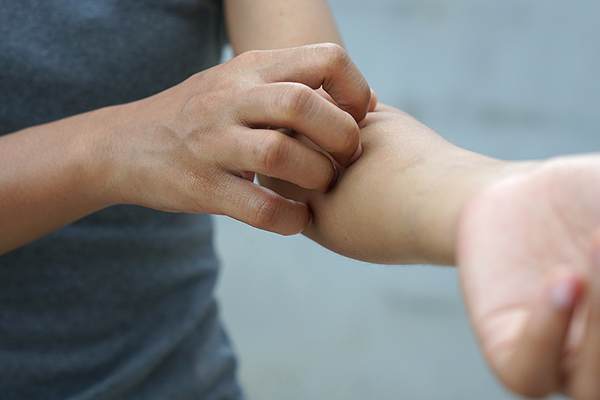Most people may not ask themselves this question, but maybe they should.
Smoking, little to no exercise, and uncontrolled diabetes or blood pressure make our blood vessels work harder. A diet focused mainly on fat and cholesterol-heavy foods fills vessels with sticky plaque.
That’s something people should worry about in general, but especially with the carotid arteries.
Located on either side of the neck, the carotid arteries deliver blood to our brains. Carotid disease—when these arteries fill with plaque—doesn’t usually have any symptoms, until some of that plaque breaks off and goes to our brain, causing a stroke or mini-stroke.
“Whenever we treat carotid disease, our goal is to decrease risk of stroke,” said Dr. Mrinal Shukla, a vascular surgeon at Augusta University Health.
Protecting Our Brains and Our Bodies
Here’s the complicated part of the issue: Anyone with any kind of blood vessel disease—whether it’s peripheral artery disease, coronary artery disease, or cerebrovascular disease (including the carotid arteries)—probably has more than one type of artery disease going on.
In other words, if you have plaque inside the arteries of your legs causing pain when you walk, you probably have plaque in other arteries, including important ones to your heart and brain. And you usually won’t feel any symptoms, unless you have a heart attack or stroke.
Lowering your risk is simple:
- • Quit smoking
- • Take aspirin
- • Go on a statin to lower cholesterol
“But these don’t get rid of the blockages,” said Shukla. “They keep you from making more.”
Treatments
Since the carotid arteries are in such key places in the body, patients and doctors have to carefully balance risk versus benefit when it comes to any surgical treatments to remove plaque.
Ideally, patients will see a primary care doctor every year for a general well check and to monitor any disease. Then, if patients start to see symptoms, that may be when it’s time to start talking about “an evaluation by a vascular surgeon to discuss surgical options,” said Shukla.
Symptoms can include:
- Sudden blindness in one eye—“like a curtain dropping down”—said Shukla, that then goes away
- Weakness on just one side of the body
- • Trouble finding the right words
To treat the plaque, surgeons can do an open procedure, where they make an incision in the neck, open the carotid artery, remove the plaque, and use a patch to close up the artery and help prevent any scar tissue. For patients who aren’t good candidates for an open procedure, surgeons can also use an endovascular technique—using a catheter running all the way up from the groin to the neck—to insert a stent and open up the artery.
A new endovascular technique is available that inserts a catheter right into the neck, reverses the flow of blood to prevent particles of plaque escaping to the brain, and catches those particles in a special filter while inserting a stent to relieve blockage. The technique opens up the surgery to patients who might not be able to undergo either the open or typical endovascular procedure. The vascular surgery team at Augusta University Health is the first to offer this procedure to the general public in the CSRA.
Take Care of Your Arteries
About a quarter of stroke symptoms are caused by carotid artery plaque. If you or someone you know has a stroke, it’s important to act FAST: Look for Face drooping; Arm weakness; Speech difficulty; and know that any of these symptoms means it’s Time to call 911.
Even better, do everything you can now to make sure your blood vessels are healthy in the future. “Prevention is the biggest thing, prevention by controlling risk factors,” said Shukla. “Don’t smoke, don’t smoke, don’t smoke; have strict blood pressure control, cholesterol control and diabetes control. And if you are concerned or have any personal history of vascular disease, talk to your primary care doctor or a vascular surgeon to have your carotid arteries evaluated.”





